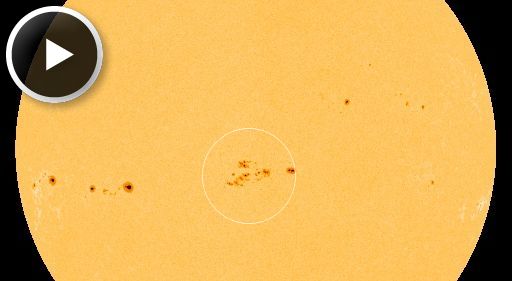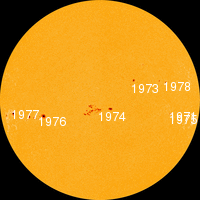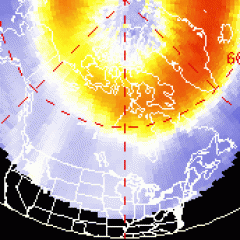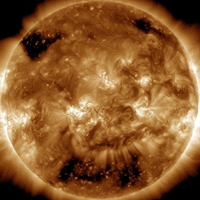AURORAS FOR VALENTINE'S DAY? Two minor CMEs that left the sun on Feb. 11th are expected to merge and hit Earth's magnetic field on Feb. 14th. The combined impact could spark geomagnetic storms and auroras around the Arctic Circle on Valentine's Day. Aurora alerts: text, voice
INCREASING CHANCE OF FLARES: Sunspot AR1974 is growing rapidly and poses an increasing chance of Earth-directed flares. Click to view 48 hours of developments:
During the past two days, the sunspot has sprouted dozens of new dark cores under an increasingly complex magnetic canopy. The region's unstable 'beta-gamma-delta' magnetic field harbors energy for strong explosions, prompting NOAA forecasters to boost the daily odds of M-flares to 45%, and X-flares to 10%. Solar flare alerts: text, voice

Solar wind
speed: 419.0 km/sec
density: 0.6 protons/cm3
explanation | more data
Updated: Today at 1817 UT
X-ray Solar Flares
6-hr max: M2 1551 UT Feb12
24-hr: M3 0425 UT Feb12
explanation | more data
Updated: Today at: 1800 UT
![]()
Daily Sun: 12 Feb 14
Sunspot AR1974 has a 'beta-gamma-delta' magnetic field that harbors energy for X-class solar flares. Credit: SDO/HMI
![]()
Sunspot number: 151
What is the sunspot number?
Updated 12 Feb 2014
Spotless Days
Current Stretch: 0 days
2014 total: 0 days (0%)
2013 total: 0 days (0%)
2012 total: 0 days (0%)
2011 total: 2 days (<1%)
2010 total: 51 days (14%)
2009 total: 260 days (71%)
Update 12 Feb 2014
The Radio Sun
10.7 cm flux: 172 sfu
explanation | more data
Updated 12 Feb 2014
![]()
Current Auroral Oval:
Switch to: Europe, USA, New Zealand, Antarctica
Credit: NOAA/POES
![]()
Planetary K-index
Now: Kp= 2 quiet
24-hr max: Kp= 3 quiet
explanation | more data
Interplanetary Mag. Field
Btotal: 5.9 nT
Bz: 1.0 nT north
explanation | more data
Updated: Today at 1817 UT
![]()
Coronal Holes: 11 Feb 14
There are no large coronal holes on the Earthside of the sun. Credit: SDO/AIA.





